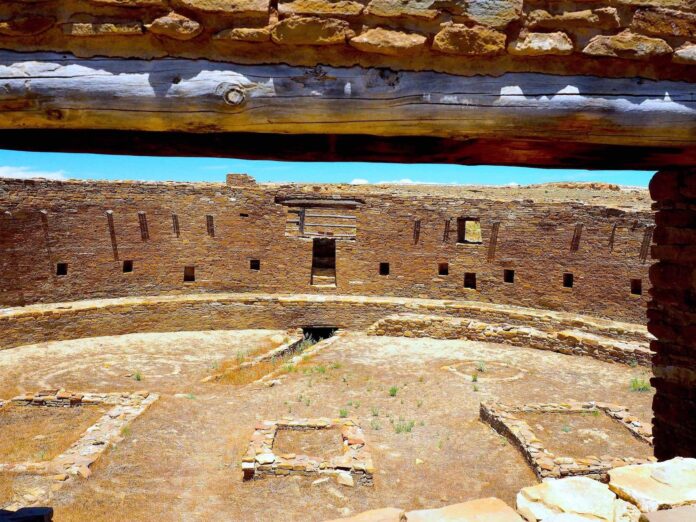On Friday (2 June) the US Secretary of the Interior Deb Haaland, a member of the Pueblo of Laguna, announced that new oil, gas and mineral extraction on federal lands within ten miles of Chaco Culture National Historical Park in northern New Mexico would be banned for 20 years.
The Chaco Canyon cultural region, which was designated a Unesco World Heritage site in 1987, includes sites affiliated with various ancestral Puebloan cultures that were active between 850 and 1250. In addition to the many archaeological sites within Chaco Culture National Historical Park, the area outside the park’s boundaries that is now protected from resource extraction for 20 years includes upwards of 4,700 known archaeological sites.
An alternative plan that had been considered by the Bureau of Land Management (BLM)—the agency tasked with oversight of federally owned lands—that would have created a five-mile buffer around the national park rather than a ten-mile buffer would have left around 2,800 of those sites vulnerable to deleterious impacts of mineral extraction.
“Today’s announcement marks an important step in ensuring Indigenous voices help inform the management of our public lands,” Tracy Stone-Manning, the BLM’s director, said in a statement. “The exceptional landscape in the Greater Chaco region has profound cultural importance.”
Chaco Canyon and the surrounding desert landscape are home to a network of pre-Columbian archaeological sites affiliated with a civilisation that was dominant across a vast region of what is now the US Southwest from the ninth century to the 13th century. Some of the sites include multi-storey structures and multi-room homes made of intricate stonework and masonry. Elaborate roads that are still visible today connected many of the communities.
The administration of US president Joseph Biden first announced its intention to extend protections of the Chaco Canyon region in November 2021. In all, new extraction activities will be blocked from a little over 336,404 acres. The ban only applies to federal lands, not properties controlled by the state of New Mexico, tribal nations or private owners. Existing extraction operations on federal lands can continue during the 20-year period, and new oil wells can even be erected on land the federal government previously leased for drilling wells.
The ban on resource extraction on federal lands around Chaco Canyon follows years of activism and pressure by the All Pueblo Council of Governors, which represents the 19 Pueblo communities located within New Mexico. In 2019, the state government ceased leasing its lands around Chaco Canyon for mining activities.
“Efforts to protect the Chaco landscape have been ongoing for decades, as Tribal communities have raised concerns about the impacts that new development would have on areas of deep cultural connection,” Haaland said in a statement. “Today marks an important step in fulfilling President Biden’s commitments to Indian Country by protecting Chaco Canyon, a sacred place that holds deep meaning for the Indigenous peoples whose ancestors have called this place home since time immemorial.”
Last year, a report from the preservation group Archaeology Southwest and the organisation Coalition to Protect America’s National Parks urged US authorities to overhaul permitting and leasing policies governing oil, gas and mineral extraction, lest protected parks and monuments become little more than “islands in a sea of development”. A key feature of the bill to raise the US debt ceiling that was passed by the House and Senate this week, and which Biden is expected to sign into law imminently, is a set of provisions that will make the permitting process for energy development projects—whether focused on fossil fuels or sustainable sources—less stringent.

























